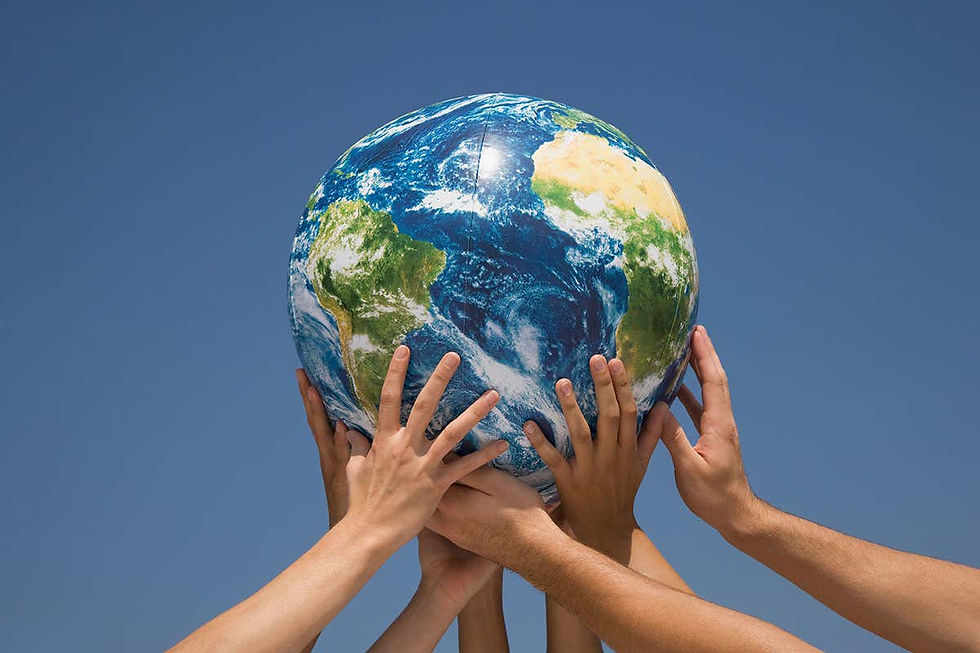Climate Justice Series Part One: How Does Climate Change Affect Different Parts of the World?
- Admin
- Jul 4, 2022
- 3 min read
Written by:
Sarah Masih
Genesis Summer Intern 2022
Foothill High School
July 3, 2022
We’ve reached a point where it's impossible to ignore climate change. Even in our privileged bubble, we’re seeing an increase in wildfires, droughts, and just heat in general. Since 1981, the Earth has gotten 0.32°F every year.
Climate change has a different effect in every place of the world. We’ve seen glaciers melting, ocean acidification, corals deteriorating, and more severe storms. Each region’s vulnerabilities are intensified making it harder for its population to thrive.
In this article, we’ll focus on 4 geographic regions and how they’re affected:
Low-lying coastal regions:
In places like Guyana, the Maldives, Belize, and Suriname where all of their urban population lives in low-lying coastal regions, any consequence of climate change makes a big impact. Climate change causes global warming which increases water temperatures in the ocean. Seawater expands due to the temperature change and the water level rises to accommodate the expanding water. Sea levels rising can lead to a loss of habitat for marine wildlife, increase the ferocity of storms, contaminate coastal soil, and cause erosion.
Central plains:
In the United States, the central plains run from west-Texas to west-Oklahoma, central Kansas, and south-central Nebraska. These places are threatened by water withdrawals due to rising temperatures causing more evaporation. Due to this, agricultural productivity will also decrease because the land will become dehydrated. It will also affect the livestock industry which uses 41% of the total water needed in the agricultural industry.
High mountain regions:
Arctic Canada, Alaska, the Andes, and the Himalayas are all in danger. The world loses 267 gigatons of ice per year according to the Guardian. Almost all, if not most, of our mountain glaciers are melting. This leaves a significant impact on the communities that rely on water from the glaciers. The lack of water affects human communities as well as the animal life in high altitudes. Normally, glacier water flows down in river form, but warm weather can cause floods due to the rapid melting.
The Polar Region:
The Arctic and Antarctic are warming twice as fast as the rest of the world. Alaska gets 2.8°F warmer every year. The frozen ground, known as “permafrost” is where roads are built in the Arctic and also act as a walkway for wildlife. As more permafrost melts, more methane is released into the air and animals that rely on the cold die off.
Climate change is a very convoluted topic. There are so many different paths to go down; so many factors to consider. Different regions, different communities, different ecosystems are all affected differently. Even within those categories there are categories - there can be upto 15 different groups of ecosystems. Within man-made life, there are factors such as economics and politics to consider.
Our generation has taken a lot of steps to try to get our world leaders to take action, but ultimately we cannot [yet] make the final decisions.
Works Cited
“Climate Change: Regional Impacts | Center for Science Education.” UCAR Center for Science Education, https://scied.ucar.edu/learning-zone/climate-change-impacts/regional. Accessed 21 June 2022.
Lindsey, Rebecca, and LuAnn Dahlman. “Climate Change: Global Temperature | NOAA Climate.gov.” Climate.gov, 2021, https://www.climate.gov/news-features/understanding-climate/climate-change-global-temperature. Accessed 21 June 2022.
Nunez, Christina. “Sea level rise, facts and information.” National Geographic, 15 February 2022, https://www.nationalgeographic.com/environment/article/sea-level-rise-1. Accessed 21 June 2022.
O'Connor, Jennifer, et al. “Meat's large water footprint: why raising livestock and poultry for meat is so resource-intensive – Food Tank.” Food Tank, 16 December 2013, https://foodtank.com/news/2013/12/why-meat-eats-resources/. Accessed 22 June 2022.
“Rising Seas Threaten Low-Lying Coastal Cities, 10% of World Population.” State of the Planet, 25 October 2019, https://news.climate.columbia.edu/2019/10/25/rising-seas-low-lying-coastal-cities/. Accessed 21 June 2022.
Simmons, Daisy. “What is 'climate justice'? » Yale Climate Connections.” Yale Climate Connections, 29 July 2020, https://yaleclimateconnections.org/2020/07/what-is-climate-justice/. Accessed 21 June 2022.
Watts, Jonathan, et al. “Speed at which world's glaciers are melting has doubled in 20 years.” The Guardian, 28 April 2021, https://www.theguardian.com/environment/2021/apr/28/speed-at-which-worlds-glaciers-are-melting-has-doubled-in-20-years. Accessed 22 June 2022.

Recent Posts
See AllIt is with profound sadness that we share the news that on Sunday March 2, 2025, the Rev. Dr. Dorsey O. Blake passed away. Rev. Blake...























コメント